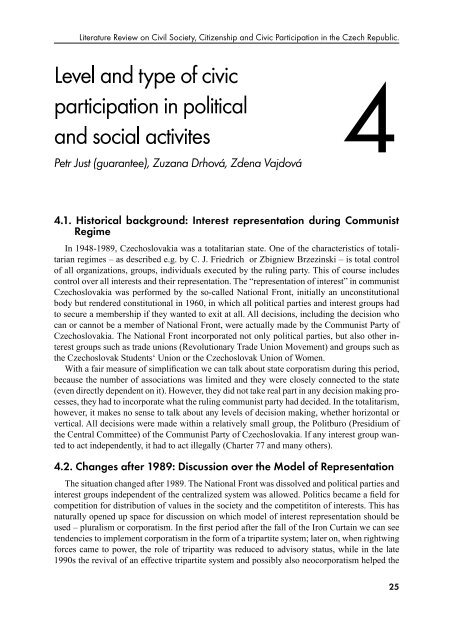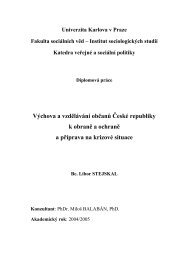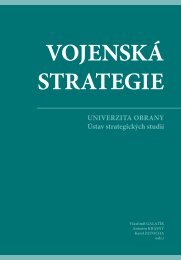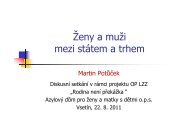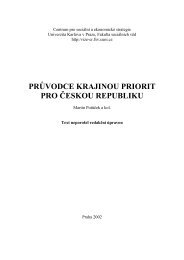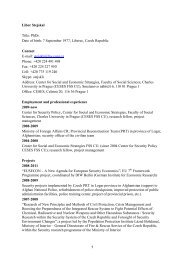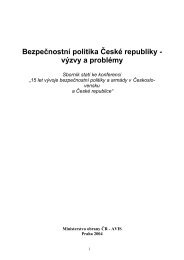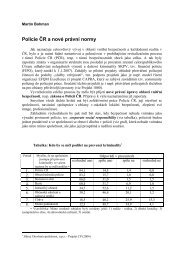CESES FSV UK Praha 2006 - Centrum pro sociálnà a ekonomické ...
CESES FSV UK Praha 2006 - Centrum pro sociálnà a ekonomické ...
CESES FSV UK Praha 2006 - Centrum pro sociálnà a ekonomické ...
You also want an ePaper? Increase the reach of your titles
YUMPU automatically turns print PDFs into web optimized ePapers that Google loves.
In 1948-1989, Czechoslovakia was a totalitarian state. One of the characteristics of totalitarian<br />
regimes – as described e.g. by C. J. Friedrich or Zbigniew Brzezinski – is total control<br />
of all organizations, groups, individuals executed by the ruling party. This of course includes<br />
control over all interests and their representation. The “representation of interest” in communist<br />
Czechoslovakia was performed by the so-called National Front, initially an unconstitutional<br />
body but rendered constitutional in 1960, in which all political parties and interest groups had<br />
to secure a membership if they wanted to exit at all. All decisions, including the decision who<br />
can or cannot be a member of National Front, were actually made by the Communist Party of<br />
Czechoslovakia. The National Front incorporated not only political parties, but also other interest<br />
groups such as trade unions (Revolutionary Trade Union Movement) and groups such as<br />
the Czechoslovak Students‘ Union or the Czechoslovak Union of Women.<br />
With a fair measure of simplification we can talk about state corporatism during this period,<br />
because the number of associations was limited and they were closely connected to the state<br />
(even directly dependent on it). However, they did not take real part in any decision making <strong>pro</strong>cesses,<br />
they had to incorporate what the ruling communist party had decided. In the totalitarism,<br />
however, it makes no sense to talk about any levels of decision making, whether horizontal or<br />
vertical. All decisions were made within a relatively small group, the Politburo (Presidium of<br />
the Central Committee) of the Communist Party of Czechoslovakia. If any interest group wanted<br />
to act independently, it had to act illegally (Charter 77 and many others).<br />
The situation changed after 1989. The National Front was dissolved and political parties and<br />
interest groups independent of the centralized system was allowed. Politics became a field for<br />
competition for distribution of values in the society and the competititon of interests. This has<br />
naturally opened up space for discussion on which model of interest representation should be<br />
used – pluralism or corporatism. In the first period after the fall of the Iron Curtain we can see<br />
tendencies to implement corporatism in the form of a tripartite system; later on, when rightwing<br />
forces came to power, the role of tripartity was reduced to advisory status, while in the late<br />
1990s the revival of an effective tripartite system and possibly also neocorporatism helped the<br />
25


